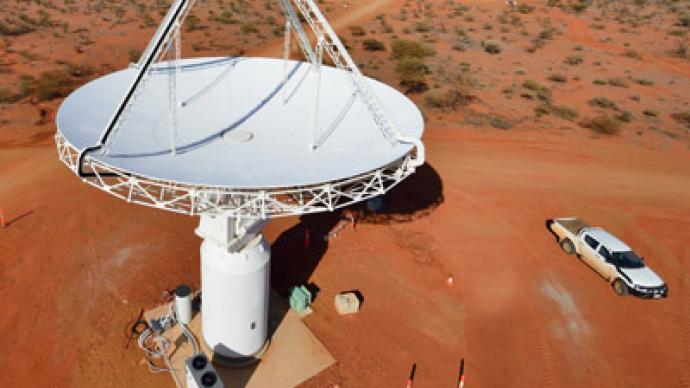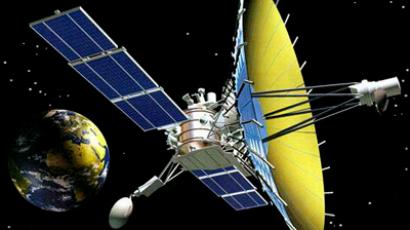Aussie super-scope begins ET hunt

The initial stage of unprecedented radio telescope has been officially opened in Australia. The project will explore the universe in search of new galaxies, black holes, planets and even intelligent extraterrestrial life – if there is any.
In the heart of red desert where man-made radio signals are minimal the AUS$152 million worth telescope will scan space for traces of the beginning of the universe, the formation and evolution of stars and galaxies, explore ‘dark matter that forms 95 per cent of the universe, check out Einstein's theory of relativity, and – who knows – it might find some proof of other life in the Universe.The Commonwealth Scientific and Industrial Research Organization (CSIRO) has finalized construction of a radio telescope at the Murchison Radio Astronomy Observatory, situated some 300 kilometers northeast of Geraldton, in Western Australia.The director of CSIRO SKA project Brian Boyle said that the 36 dish Australian Square Kilometer Array Pathfinder (ASKAP) will “really push the boundaries of our knowledge of the physical laws in the universe".The search for extraterrestrial life is going to be “almost a parallel activity to all the survey work that's being done," Boyle said.The ASKAP project is a part of a colossal $2.5 billion Square Kilometer Array Project to be completed by 2024 that would unite three large radio telescopes, two of them – in South Africa (MeerKAT and KAT-7 telescopes) and New Zealand – are yet to be constructed. Starting from 2016 an additional 60 dishes will be added to the Australian ASKAP observatory together with thousands of antennas.The project is called Square Kilometer Array because all three sites will be made up of a large number of linked antennas with the total surface area of each one approximately one square kilometer. Currently 13 countries and nearly 100 organizations are contributing to the project."We will understand how galaxies work. We will look back into the very birth of our own universe," said CSIRO Chief Executive Dr Megan Clark.Australia's Science Minister Chris Evans said the telescope is a major innovation for his country."This will be 50 years worth of scientific research performed in Australia, providing world-leading scientific knowledge about our galaxies," he said.In 2024 the system will consist of 3,000 dishes integrated into a single system with unprecedented computation capacity. The SKA radio telescope is expected to be 50 times more powerful than current radio telescopes and could look back some 14 billion years to when our universe began.
Interesting facts about the Square Kilometer Array Project:Once finished the SKA project will become at least 50 times more powerful and 10,000 times faster than any other existing radio telescope on our planetThe data collected by the SKA in a 24-hour period, would take nearly two million years to play back on an iPod.The SKA will generate enough raw data every day to fill 15 million 64 GB iPods.The SKA central computer will have the processing power of about one hundred million PCs.The SKA will use enough optical fibre to wrap twice around the Earth.The dishes of the SKA will produce 10 times the current global internet traffic.The aperture arrays will produce more than 100 times the current global internet traffic.The SKA super-computer will perform operations per second equivalent to the number of stars in three million Milky Way-size galaxies. The SKA will be so sensitive that it will be able to detect an airport radar on a planet 50 light years away.All data taken from the official SKA Africa website.
















